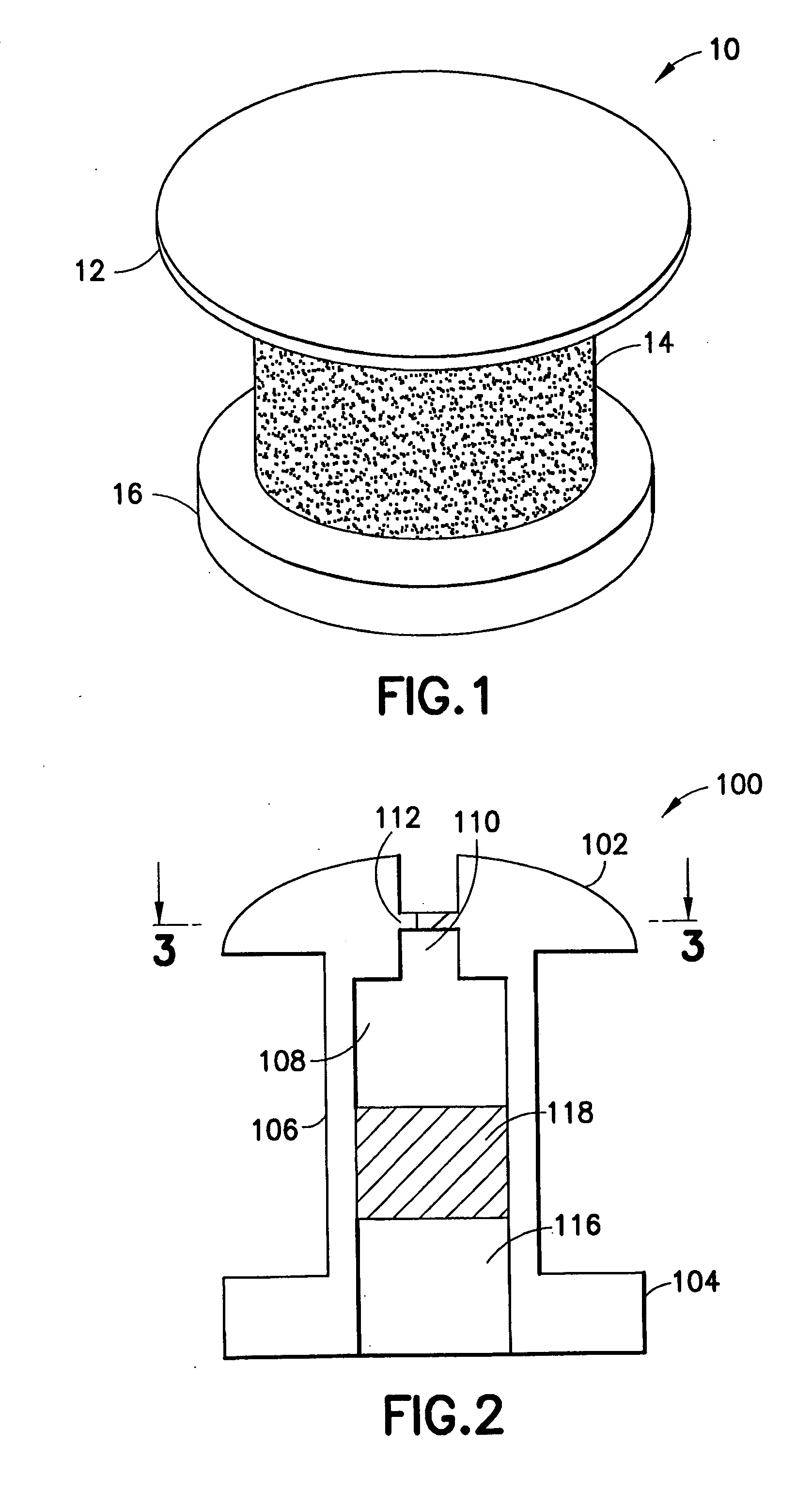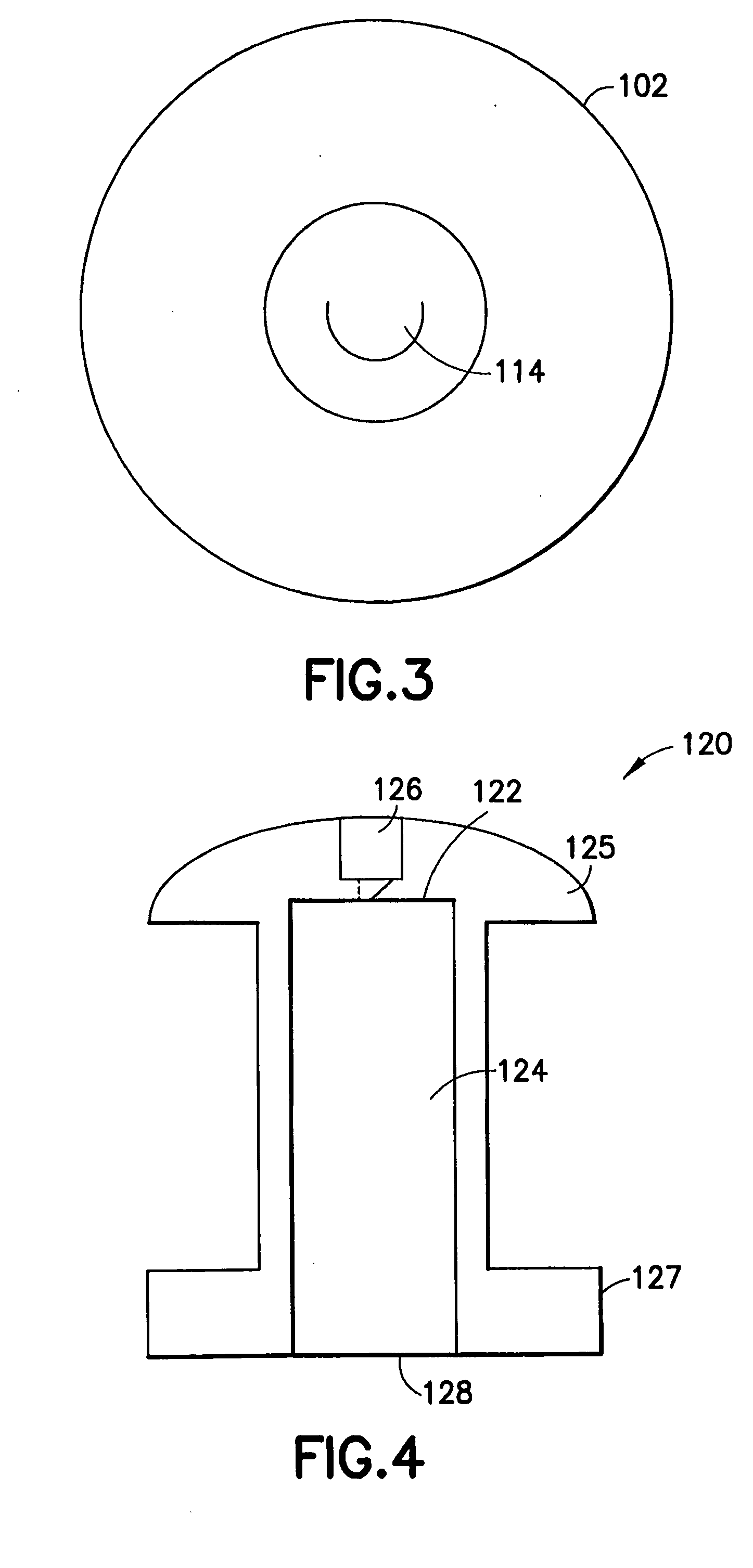Ocular implant and methods for making and using same
a technology of ocular implants and ocular arteries, which is applied in the field of ocular implants, can solve the problems of high intraocular pressure of glaucoma, drug delivery, and high labor intensity of surgeons, and achieve the effect of reducing the ingress of microorganisms
- Summary
- Abstract
- Description
- Claims
- Application Information
AI Technical Summary
Benefits of technology
Problems solved by technology
Method used
Image
Examples
Embodiment Construction
[0030] The transcornea shunt or implant (hereinafter “shunt”) has been developed to serve several purposes, such as to reduce the intraocular pressure (IOP) in the eye by shunting aqueous humor fluid from the anterior chamber of the eye, through the cornea, and to the terafilum. To do so, the shunt must be implanted through a small incision and into the cornea of the eye, actually extending between the inner and outer surface of the cornea. In yet another application, the shunt can be implanted through the sclera to introduce a substance into the posterior chamber of the eye.
[0031] As shown in FIG. 1, an enlarged perspective view of a shunt according to an embodiment of the present invention may be seen. In a representative embodiment, the shunt may be approximately one millimeter long with an outer diameter of approximately 0.5 mm. While the shunt illustrated in this figure is shown as a cylindrical structure, it is understood that other shapes of tubular conduits may be suitable ...
PUM
 Login to View More
Login to View More Abstract
Description
Claims
Application Information
 Login to View More
Login to View More - R&D
- Intellectual Property
- Life Sciences
- Materials
- Tech Scout
- Unparalleled Data Quality
- Higher Quality Content
- 60% Fewer Hallucinations
Browse by: Latest US Patents, China's latest patents, Technical Efficacy Thesaurus, Application Domain, Technology Topic, Popular Technical Reports.
© 2025 PatSnap. All rights reserved.Legal|Privacy policy|Modern Slavery Act Transparency Statement|Sitemap|About US| Contact US: help@patsnap.com



